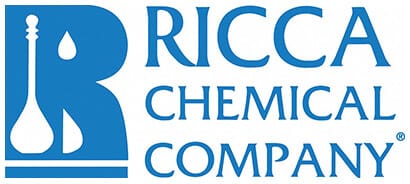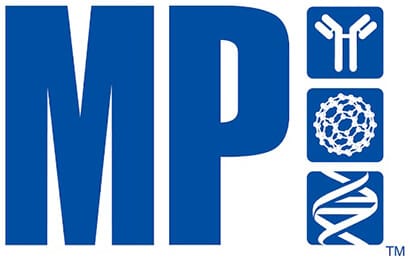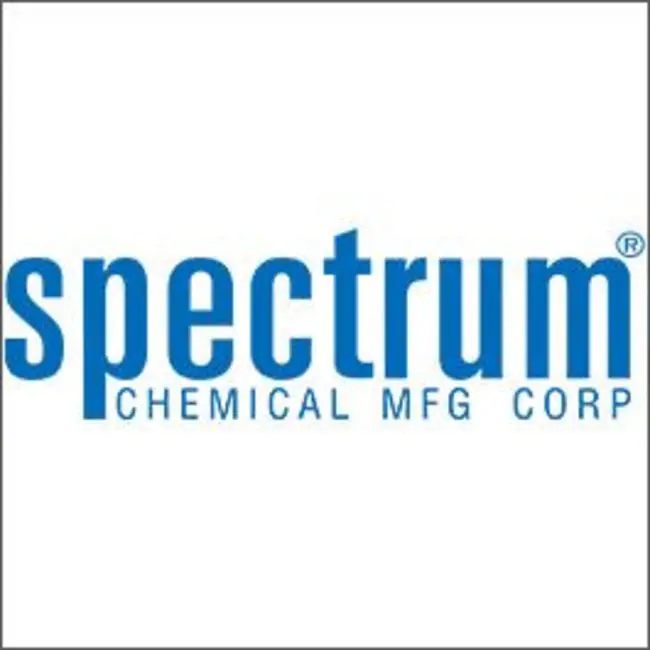4ml (1 ml Settled Beads)
Showing all 6 results
-
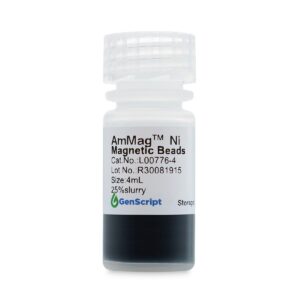
AmMag™ Ni Magnetic beads
$439.88 Add to cart View Product DetailsGenScript’s AmMag™ Ni magnetic beads are designed for purification and screening of histidine-tagged (his-tagged) proteins. The beads are highly EDTA and DTT resistant (Table2), enabling them to bind proteins in the presence of chelators. The beads are also optimized for easy cleanup and regeneration, for reuse with multiple samples. Table 1 describes the basic properties of the AmMag™ Ni magnetic beads.
-

AmMag™ Protein A Magnetic Beads
$528.71 Add to cart View Product DetailsGenScript AmMagᵀᴹ Protein A Magnetic Beads are developed and optimized for antibody purification for high throughput and high volume applications.
The sample containing antibody is added to the AmMagᵀᴹ Protein A Magnetic Beads and incubated on a shaker overnight or 2 hours (depending on the concentration of samples) for the antibody to bind to the beads. The antibody bound to the beads can be eluted off by using acidic elution facilitated by a magnetic separation device. Magnetic separation eliminates the need for centrifugation, minimizes the loss of sample and makes the process more userfriendly.
GenScript AmMagᵀᴹ Protein A Magnetic Beads are super paramagnetic beads with diameter of 45-100μm, covalently coated with alkaline tolerant protein A. The beads are supplied as 25% slurry in 20% ethanol. The AmMagᵀᴹ protein A Magnetic Beads have a binding capacity of 40mghuman IgG per 1 ml settled beads.They can be reused for up to 40 cycles. A total of 20% reduction in binding capacityis observed after 40 cycles.
Protein A, a bacterial cell wall protein isolated from Staphylococcus aureus, binds to mammalian IgG’s, mainly through the Fc regions.The alkaline tolerant protein A not only keeps the specific binding capacity to Fc region of immunoglobulin molecules, but also tolerates alkaline conditions and can withstand rigorous cleaning procedures.
-
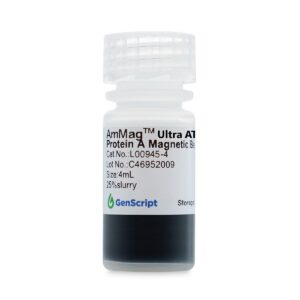
AmMag™ Ultra AT protein A magbeads
$528.71 Add to cart View Product DetailsIntended Use
AmMag™ Ultra AT protein A magbeads
are developed and optimized
for antibody purification for high throughput and high volume applications.
Principle
The sample containing
antibody is added to the AmMag™ Ultra AT protein A
magbeads and incubated on a rotor overnight or 2 hours (depending on the
concentration of samples) for the antibody to bind to the beads. The antibody
bound to the beads can be eluted off by using acidic elution facilitated by a
magnetic separation device. Magnetic separation eliminates the need for
centrifugation, minimizes the loss of sample and makes the process more user
friendly.
Material Supplied
GenScript AmMag™ Ultra AT protein A magbeads are super paramagnetic
beads with diameter of 45-100 μm, covalently coated with Ultra alkaline
tolerant protein A, After treatment with 1M NaOH for 24h, the load
decreased by no more than 10%. The beads are supplied as 25% slurry in 20% ethanol.
The AmMag™ Ultra AT protein A
magbeads have a binding capacity of 40mg human IgG per 1 ml settled beads. They
can be reused for up to 100 cycles. After 100 cycles, there was almost no decrease in
binding load.
Protein A, a bacterial cell
wall protein isolated from Staphylococcus aureus, binds to mammalian IgG’s,
mainly through the Fc regions. The alkaline tolerant protein A not only keeps
the specific binding capacity to Fc region of immunoglobulin molecules, but
also tolerates alkaline conditions and can withstand rigorous cleaning
procedures. -
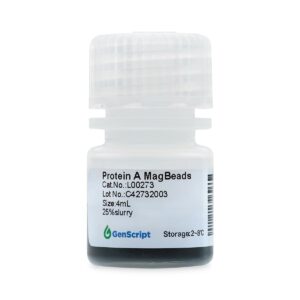
Protein A MagBeads
$79.35 Add to cart View Product DetailsGenScript Protein A MagBeads are superparamagnetic beads covalently bound with recombinant protein A for antibody purification. The beads are supplied as 25% slurry in phosphate buffered saline (PBS), pH 7.4, containing 20% ethanol. The Protein A MagBeads have a binding capacity of more than 10 mg Rabbit IgG per 1 ml settled beads (e.g. 4 ml 25% slurry).
Protein A, a bacterial cell wall protein isolated from Staphylococcus aureus, binds to mammalian IgGs, mainly through Fc regions. Native Protein A has five IgG binding domains and many unknown-function repeated sequences. Recombinant Protein A only contains five high-affinity IgG binding domains to reduce nonspecific binding.Product Details
Cat. No. Product Name Volume supplied MagBeads content L00273 Protein A MagBeads 4 ml 25% slurry -
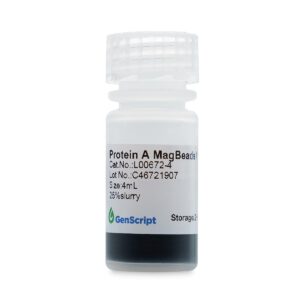
Protein A MagBeads MX
$407.96 Add to cart View Product DetailsGenScript Protein A MagBeads MX are super paramagnetic beads of average 50 μm in diameter, covalently coated with recombinant Protein A. The beads are supplied as 25% slurry in 20% ethanol. The Protein A MagBeads MX have a binding capacity of more than 30 mg human IgG per 1 ml settled beads.
Protein A, a bacterial cell wall protein isolated from Staphylococcus aureus, binds to mammalian IgGs, mainly through Fc regions. Native Protein A has five IgG binding domains and many unknown-function repeated sequences. Recombinant Protein A only contains five high-affinity IgG binding domains to reduce nonspecific binding.
Product Details
Cat. No. Product Name Volume supplied MagBeads content L00672 Protein A MagBeads MX 4 ml 25% slurry -
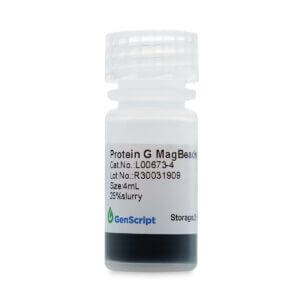
Protein G MagBeads MX
$429.53 Add to cart View Product DetailsGenScript Protein G MagBeads MX are superparamagnetic beads of average 40 μm in diameter, covalently coated with recombinant Protein G. The beads are supplied as 25% slurry in 20% ethanol. The Protein G MagBeads MX have a binding capacity of more than 25 mg Human IgG per 1 ml settled beads.
Protein G is a genetically engineered protein (MW≈22 kDa) that combines the IgG binding sites of both Protein A and Protein G. 6×His-tag was attached to its N-terminal to facilitate the purification. Protein G has greater affinity than protein A for most mammalian IgGs, especially for certain subclasses including human IgG3, mouse IgG1 and rat IgG2a. Unlike protein A, protein G does not bind to human IgM, IgD and IgA.Product Details
Cat. No. Product Name Volume supplied MagBeads content L00673 Protein G MagBeads MX 4 ml 25% slurry


